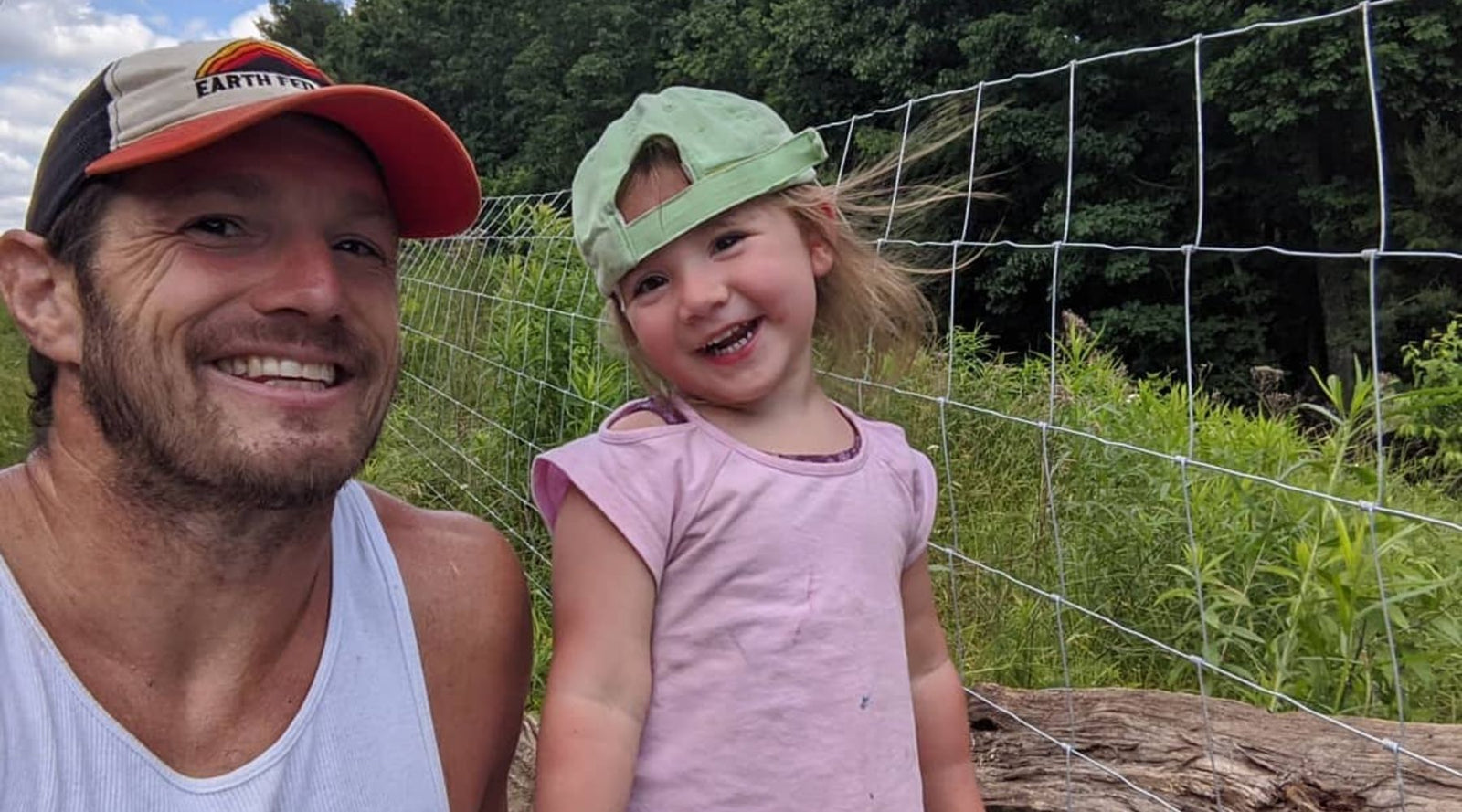Your Cart is Empty
we ship from colorado to maine

Robert Frost is attributed with saying "Good fences make good neighbors." Well, we consider ourselves neighbors with all our pigs, and good fences make a yard we can enjoy as a family! This hasn't always been the case, as we've built a farm from scratch, we've slowly realized the benefits - and costs - of good fences!
Early on, we tried the minimalist route - electrified portable wire that was moved on a daily/weekly basis with zero perimeter fencing. Well, turns out this makes your neighbors NOT like you when cows end up in their yard, on the road, or in their corn! So, we invested a solid $25k in perimeter fencing. Overnight, I started to sleep better, feel less stressed, and enjoy setting up interior paddocks for my animals.
Fences also allow us to rotationally graze successfully. If we can keep critters in one spot for a set amount of time and then allow them in somewhere else, it benefits the animals and the pasture tremendously. The animals get fresh, clean forage and the pasture gets a rest. Check out these two pictures of grazed and fresh forage:
 |
 |
This year, we decided to put another investment into fencing - particularly protecting our fruit trees from livestock, but also making use of one of our favorite spots on the farm for grazing. Lovingly referred to as Jurassic Park for its wild feel and lots of bird activity, this area is a strip of about 18 acres over which the power lines run at the South end of the farm. Before we got here, this right of way was kept from reverting to the power lines with herbicide spraying by the power companies every couple of years. As organic growers, we are allowed to opt out of spraying, as long as we keep the forage under control. This was easy on the west entry side, that has gentle slopes. Within 3 years of grazing, this area went from thorny shrubs, invasive weeds, and poison ivy (the plants that tend to spring up after roundup is sprayed) to usable grassy forage. Today it is actual beautiful pasture.

All these temporary netting fences are soon to be solid hard fence that pigs can't easily rip through when the electric charge (or their moods) get low!
The eastern side of Jurassic Park, on the other hand, is extremely steep. When we were warned this spring that we had to better keep the tree growth down or else they would have to spray, we decided to cut down the young trees that were growing there, and fence it to be managed by grazing.
When our fence contractor looked at the hills, he knew they couldn't get any big equipment back in there, and therefore it would cost us wayyy too much to fence in. So, I did what I often do and tried to figure out a cheaper/better way using my experience building fence.
We ended up hiring the crew to pound posts in the areas they could get to. But we also bought a hand auger for drilling post holes manually, and an auger for the tractor for spots where we could get a machine in. We found a relatively inexpensive woven wire sold by the roll, and we changed the end bracing we usually make to be able to dig half the post holes we normally do.
[Note from Anna: In editing this, I am interrupting Brooks' modest explanation to expose the truth - this is one of the most ridiculous projects I've ever seen him attempt (and there have been a lot :) He has been out there, in the hottest part of the day every afternoon for the past 4 weeks, pulling up old fence posts to reuse, carrying heavy rolls of wire, unrolling them, hand digging holes, chopping through thorny brush and trees, stretching the fence wire with a variety of winches/chains/pry bars, pounding in posts, all on a 45 or greater degree slope. It's pretty insane. The kids and I have been recruited to help when we can, but our endurance and strength limit our effectiveness. These fencelines, which surely do improve the functionality of our farm tremendously, have been built by Brooks's pure muscle and determination.

This photo was from where we first started, in the gently sloping open areas. We don't even have any photos of the treacherous sections..... yet. Pictures coming soon!]
A traditional H brace operates like this, and looks like this in real life on our farm:

|
|
The stretched wire wants to pull the end post out of the ground. The second post and the diagonal wire connecting them prevents this. But, with over 7,000 feet of fence to build, two post holes at every end was one too many for me! I remembered an old school grazing book that mentioned floating braces. They work like this:
 |
 |
Voila! One less post and lots of fence built. We're almost 3/4 of the way finished making our fences for the year.
These fences will allow us to raise more animals in better conditions, and will continue to help grow more forage - thus sequestering more carbon from the atmosphere! We love trading bacon for reversing climate change :).
Comments will be approved before showing up.
JM
August 26, 2020
I am a new customer and I really enjoy your blog posts. Please keep writing and posting pictures. I appreciate your thoughtful approach to farming and really liked the extra note from Anna in this one.